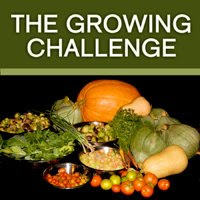 I just stumbled upon a great article in the New York Times, called “Putting Meat Back in Its Place” by Mark Bittman (aka The Minimalist). I have to applaud Bittman for setting out the two main ground rules in his first few paragraphs: 1) It doesn’t matter why you’ve decided to eat less meat – the goal of this article is to help you actually do it; and 2) This isn’t an article about becoming a vegetarian – he is truly focused on combating the typical American style of eating that focuses the dinner plate on a large lump of meat at its center. As someone who’s been slowly trying to fight the focus on meat in her diet in order to become a more responsible omnivore, I had to read on.
I just stumbled upon a great article in the New York Times, called “Putting Meat Back in Its Place” by Mark Bittman (aka The Minimalist). I have to applaud Bittman for setting out the two main ground rules in his first few paragraphs: 1) It doesn’t matter why you’ve decided to eat less meat – the goal of this article is to help you actually do it; and 2) This isn’t an article about becoming a vegetarian – he is truly focused on combating the typical American style of eating that focuses the dinner plate on a large lump of meat at its center. As someone who’s been slowly trying to fight the focus on meat in her diet in order to become a more responsible omnivore, I had to read on.
Bittman goes on to point out that it’s impossible to cut back to a reasonable amount of meat in your diet without some consequences for the people around you. Boy, I can tell you that’s definitely true. When I started trying to eat less meat, I tried to find a way to do it that would have the smallest possible effect on those around me – lunch – and I had no problem there. But as I've slowly started to reduce my meat intake at dinner, it's begun to effect my friends and my husband, and that has definitely slowed me down in my efforts. Which means that I'm definitely interested in hearing suggestions for how to make this change stick.
Bittman's suggestions for easing the path to eating less meat are:
- Forget the protein thing. Here, Bittman points out that many plants (spinach and lentils are good examples) actually contain more protein than meat. He also notes that “You also don’t have to eat the national average of a half-pound of meat a day to get enough protein. On average, Americans eat about twice as much as the 56 grams of daily protein recommended by the United States Department of Agriculture (a guideline that some nutritionists think is too high). For anyone eating a well-balanced diet, protein is probably not an issue.”
- Buy less meat. This one is about portion size, which is widely recognized as a huge problem in the typical American diet, as well as the number of ounces of meat a serving should really contain. According to the USDA, four ounces per person should be sufficient for any one meal. Now think about that – when was the last time you saw a portion of meat (steak, chicken breast, pork or lamb chop) that was less than 6-8 ounces? How much ground beef did you buy last time you decided to make burgers? I know we tend to buy a full pound…for two of us…so I know that’s a huge deal for us. His suggestion here is to begin incorporate smaller amounts of meat into more balanced meals. Salt pork and bacon can be used to season beans and other dishes. Stir-fries, salads, bean, rice and noodle dishes can be made with small chunks of meat. The goal here is to ensure that “…meat is seen as a treasure, not as something to be gobbled up as if it were air.”
- Get it out of the center of the plate. By building your meal around vegetables, grains, salads, potatoes, and other items typically relegated to being “side dishes,” you can begin to diversify your plate and reduce the emphasis on meat. If you think about it, there are quite a few quite common American dishes that do this successfully. Think soups, pot pies, spaghetti or lasagna, and just about any casserole – meat doesn’t have to be at the center of all of these, and they allow you to make your own decisions as to how you balance the ingredients. In this section, Bittman notes that just changing the way we talk about meat in the meal can make a difference. Think about the shift in focus between “We’re grilling steaks with a few vegetables,” and “We’re grilling veggies and bread, and maybe throw on a few cubes of steak.” Suddenly, the meat starts to seem more like that treasure he mentioned earlier.
- Buy more vegetables, and learn new ways to cook them. This is a must. If you don’t know how to successfully combine veggies with grains (and sometimes small pieces of meat), you’ll struggle with reducing your meat consumption.
- Make non-meat items as convenient as meat. Wash and prep veggies when you get them, or consider cooking or par-cooking them before freezing those that take such treatment. Frozen green beans, corn, tomatoes, spinach, and many other vegetables are excellent pulled out of the freezer for inclusion in any recipe.
- Make some rules for yourself. For me, this means I try to steer clear of meat at lunch and work to have at least one fully vegetarian day per week. For you it may mean that you’ll choose to eat salads at least three times a week, have meatless Fridays, swear off bacon at breakfast, or any other combination of things.
- Look at restaurant menus differently. You may not eat out enough for this to be a big deal, but for now, I do. Try not to go to restaurants that focus on a lump of meat. Most Asian and Italian restaurants are good for this, but there are many other choices that fit this bill. If you do find yourself in a meat-focused restaurant (ah, the steakhouse), keep in mind that you don’t have to order from the entrée section – sometimes the appetizers, salads and soups fit the bill better, so feel free to go ahead and order that way. Also remember that many chefs are perfectly amenable to eliminating or reducing the meat component in a dish. Some restaurants that do this will also reduce your bill accordingly.
- Above all, remember that you can make the choice to forget the rules for a meal here and there. Don’t be too hard on yourself – the goal is to reduce meat, not cut it out of your diet, so you don’t have to feel guilty about every meal.
I love all this advice, and I’m looking forward to implementing some of it in real life. For those omnivores out there, have you decided to eat less meat? If so, what strategies or rules have you used? Is it working?
PS: If you want to know more about Mark Bittman you can check out his cookbook, How to Cook Everything: Simple Recipes for Great Food.











1 comment:
Great list. A resource everyone should see. Thanks for sharing.
Post a Comment